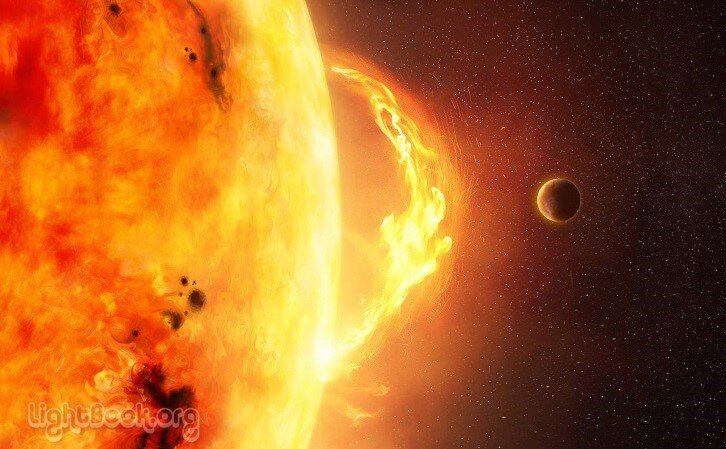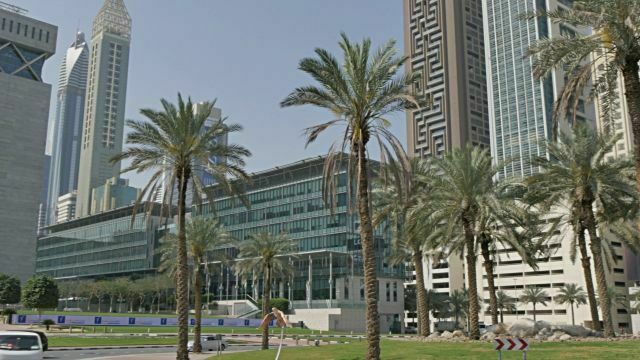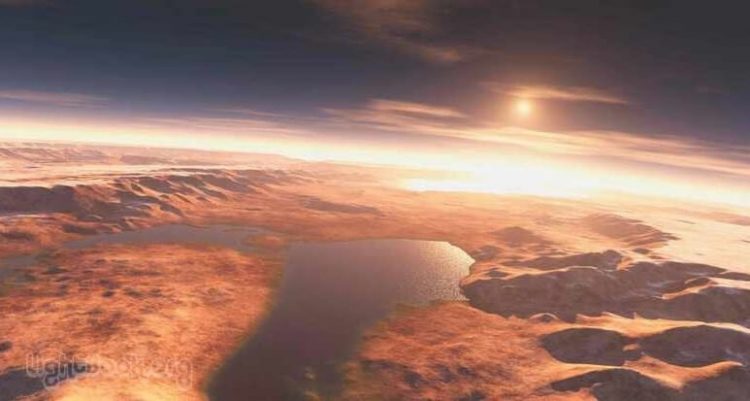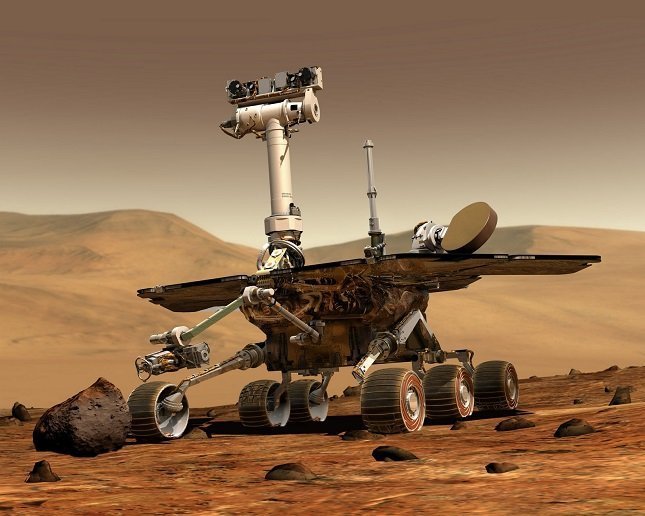How Can the Sun Destroy Life on the Earth?
How Can the Sun Destroy Life on the Earth?
How Can the Sun Destroy Life on the Earth?
the sun, that majestic and awe-inspiring celestial body which has been the source of life and energy for countless millennia, can also wield the power to bring about destruction on Earth. While we often associate the sun with warmth, light, and the nurturing of life, it’s important to recognize that the same fiery giant in our sky can pose threats that have the potential to disrupt, damage, and even annihilate life on our planet.
How can the sun be affected by the glare emanating from other stars, and how powerful and harmful if it occurs on the globe? Can the sun destroy life on Earth? After several studies and monitoring of the center, scientists discovered in NASA by Kepler mission ‘star’ from which the radiation emanates strongly and that the sun may be subjected to huge glows.
The sun’s glow is a burst of energy that triggers the release of heat and light in a form of huge kinetic waves and releases it into the space surrounding the star. They believe that this energy from the massive thermal and photovoltaic glows is more than ten times the normal glow.
Scientists have discovered in their space discoveries a double star in the Milky Way called KIC9655129 and said that the star is capable of producing a huge amount of thermal and photovoltaic glow.

The Unseen Peril: Solar Radiation and Its Effects
One of the most subtle yet profound ways in which the sun can wreak havoc on Earth is through its emission of solar radiation.
While the Earth’s atmosphere acts as a protective shield against much of this radiation, certain types, such as ultraviolet (UV) and X-rays, manage to penetrate through. Prolonged and intense exposure to these types of radiation can lead to severe health issues in living organisms. Human beings, for instance, can experience skin cancers, cataracts, and weakened immune systems as a result of prolonged UV exposure.
Additionally, solar radiation can interfere with the delicate balance of ecosystems by damaging the DNA of various organisms. Phytoplankton, the microscopic marine plants that form the foundation of aquatic food chains, are particularly vulnerable.
These tiny organisms not only produce oxygen for the planet but also serve as a primary source of sustenance for countless marine species. The disruption of their populations due to DNA damage could trigger a domino effect, leading to the collapse of marine ecosystems and ultimately impacting life on Earth in unimaginable ways.
Solar Flares: Unleashing Destruction
Another formidable weapon in the sun’s arsenal is the occurrence of solar flares. These are sudden and intense bursts of energy and radiation that emanate from the sun’s surface. While Earth’s magnetic field usually provides a protective barrier against these flares, particularly strong ones have the potential to cause significant disruptions.
In our modern technological age, solar flares can spell disaster for our interconnected world. These intense bursts of energy can interfere with communication systems, disrupt satellites, and even damage power grids. The most famous incident of this kind occurred in 1859, known as the Carrington Event.
Telegraph systems worldwide experienced outages, and in some cases, operators received electric shocks from their equipment. In today’s world, a similar event could lead to widespread blackouts, communication breakdowns, and economic turmoil.
The Ominous Shadow of a Supervolcano
While not a direct consequence of the sun’s actions, its influence can also indirectly trigger catastrophic events on Earth. Volcanic eruptions, though primarily driven by geological forces, can be exacerbated by solar activity.
The sun’s radiation can penetrate Earth’s atmosphere and heat its surface, leading to changes in atmospheric pressure. This, in turn, can trigger the eruption of supervolcanoes—massive volcanoes with the potential to cause global devastation. A supervolcanic eruption can expel immense amounts of ash and gases into the atmosphere, effectively blocking out the sun’s rays.
This could result in a “volcanic winter,” with plummeting temperatures and reduced sunlight. Crops would fail, ecosystems would collapse, and famine could sweep across the globe. While such an event is rare, the sun’s role in potentially triggering such a catastrophe is a stark reminder of its power to shape the destiny of life on Earth.
Space Weather and Earth’s Magnetic Shield
How Can the Sun Destroy Life on the Earth? The sun doesn’t just impact the Earth with radiation and solar flares; it also influences our planet’s magnetosphere, the protective magnetic field that shields us from the solar wind—a continuous stream of charged particles emitted by the sun. The interaction between the solar wind and Earth’s magnetosphere can lead to geomagnetic storms.
In extreme cases, geomagnetic storms can interfere with technology on Earth. Navigation systems, communication networks, and power grids can all be disrupted. In 1989, a geomagnetic storm caused a massive power outage in Quebec, Canada, leaving millions without electricity for hours. As our dependence on technology continues to grow, so does our vulnerability to the sun’s potential to plunge us into darkness and chaos.
Preparing for the Unpredictable
While the sun’s potential to wreak havoc on Earth is evident, humanity is not helpless in the face of these threats. Scientists and researchers continuously monitor solar activity, striving to predict and prepare for the sun’s potentially destructive outbursts. Space agencies around the world have developed systems to monitor space weather and provide timely warnings to those who could be affected.
Additionally, advancements in technology and infrastructure hardening can help mitigate the impact of solar flares and geomagnetic storms. Power grids can be designed to withstand such disturbances, and communication systems can have backup plans in place to ensure connectivity even in the face of solar interference.
Solar Flares
The researchers determined that they had identified the wave profile on the fluorescence glitter curve by analyzing the time sequences of the star KIC9655129 and collected these preliminary results and information with the Kepler Space Telescope. The Kepler telescope was sent on 6 March 2009 from Cape Canaveral. This Kepler probe has monitored more than 100 thousand solar stars continuously for more than five years.
Keep in mind that the current glow in the stars is determined by observing and recording the degree and force of the pulses issued regularly and steadily. These oscillations are often similar to waves whose length or shortness in the dimensions and different specifications of the sites of points on the surfaces of the stars.
Scientists have shown through Kepler’s telescope that many of the waves correspond to one another in the glow of KIC9655129 and resemble the characteristics of a normal glow of the sun.

Planet Kepler-438b
Scientists have confirmed that this massive glow of the star, if it occurs on the sun, will cause great and devastating consequences for the people of the earth. These massive waves emanating from this star will result in the interruption of radio communications in air navigation and also affect many of the electrical stations and stop working on a wide range.
According to the researchers, this hypothesis and the possibility of the occurrence of this glow in the sun is very small and this is fortunate. As astronomers have said, a planet called Kepler-438b, much like the Earth, has proved to be unfit for life as a result of the massive flares of a star orbiting the planet. The question remains: Can the sun destroy life on Earth?
Conclusion
The question “How Can the Sun Destroy Life on the Earth?” reminds us that the same celestial body that sustains life on our planet also possesses the power to disrupt, damage, and even devastate it. From the subtle yet insidious effects of solar radiation to the dramatic events of solar flares and super volcanic eruptions. The sun’s influence on Earth is a reminder of the delicate balance between life’s vitality and the forces that shape our universe.
Through vigilant monitoring, scientific innovation, and global cooperation, we can strive to safeguard our planet from the potential destructive forces that the sun can unleash. Source: Agencies
Related Topics
- See Jabuka Island Magnetism Images and Know its Secrets
- Discover The Coldest Areas In The World and People’s Life
- Watch the Largest Maze in the World with the Best LED Lights
Inside Nyiragongo – Watch the Most Dangerous Volcano Video
- NASA Scientists Confirm There is Water On Mars (Video)
- What is The Fact That America is Landing on The Moon?



